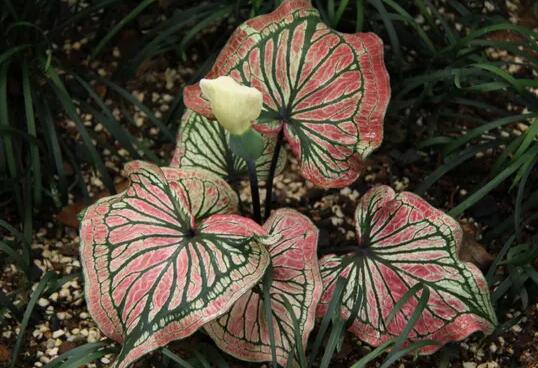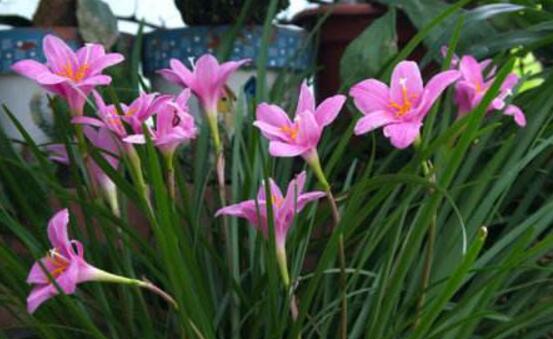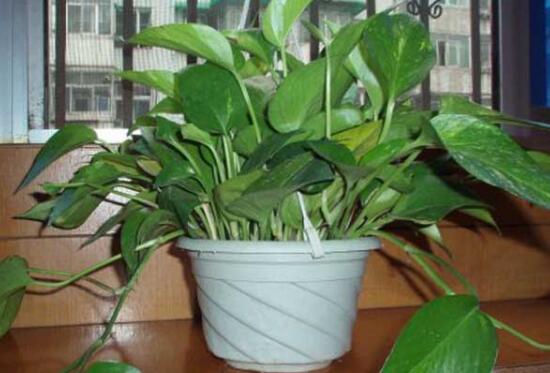Why the leaves of taro do not grow up, and the soil is too sticky / watered improperly
Taro is a kind of green herb, its leaves look like a shield, and the color is very gorgeous, so it is loved by many people, and there are many people who raise it in our country. however, some people will find that how to grow leaves can not grow up in the process of breeding. So why don't the leaves of taro grow up? Next, the editor will take you to learn about it.
First, find the reason why the leaves of taro do not grow up.

Second, the reason why the leaves of taro do not grow up, the soil is too sticky / improper watering
1. The soil is too sticky.
Taro is a kind of plant that transports underground tubers, so it is not suitable to grow in a soil with too much stickiness. If the soil is too sticky, it will cause the roots to be unable to breathe, which will affect the development of roots very much. As a result, the leaves of taro can not grow.
two。 Improper watering
In the process of breeding flower and leaf taro, improper watering will also cause its leaves not to grow up. If it is watered too little, its growth will also be limited, and the leaves will gradually wither and yellow. If too much watering makes the basin soil stagnant, it will also lead to the phenomenon of rotten roots, thus affecting the growth of leaves.
3. The temperature is not suitable
In the process of growing taro, if the ambient temperature is too high or too low, it is not conducive to the growth of its leaves, so the leaves will not grow up, and its more suitable growth temperature is between 20 and 30 ℃, so we must do a good job in temperature control when breeding.
Third, the solution to the problem that taro leaves do not grow up is to change soil / control water.
1. Rational watering
Spring and summer are the peak season for the growth of taro, so we should keep the soil moist and watered frequently, so that it can grow better, but we have to control the amount of watering when watering. After the soil has a certain amount of moisture, we can stop watering, and remember that it can not be watered too much, otherwise it is easy to cause stagnant water to cause rotting roots.
two。 Change the soil in time
If the taro leaves do not grow up because of the heavy soil viscosity, then we need to change the soil in time and choose a more loose and fertile soil. This kind of soil has good drainage and air permeability, which can make the taro grow better.
Why can't the leaves of taro be raised?
Flower-leaf taro, also known as colorful taro, likes to grow in a high-temperature, semi-shady environment. The florescence is in April and the peak period is from May to September. Flowers and leaves taro leaves have beautiful colors, the ornamental value in summer is good! Why can't the leaves of taro be raised?
The reason why the leaves of flower-leaf taro can not be raised.
① the soil is too sticky and heavy. Taro is an underground tuber plant, which requires loose, fertile and well-drained soil. If the soil is too sticky and heavy, it will affect the root system development and cause the leaves to grow small.
② is under-hydrated or overwatered. Taro needs to maintain sufficient water during the growth period in order to promote the rapid growth of the plant, if the lack of water will limit the growth of leaves. In addition, too much watering will also cause stagnant water in the basin soil, cause rotten roots and affect the growth of leaves.
The ③ temperature is too high or too low. The suitable temperature for the growth of taro is 22-28 ℃. Too high or too low temperature is not conducive to leaf growth.
Too little ④ light will also cause poor growth of taro leaves.
The above content is the information about why the leaves of taro can not be raised, and there are many reasons. According to the information in the article, we analyze the reasons why the leaves of taro are not large, and analyze the specific problems.
Why can't the leaves of taro grow up?
The reason why the leaves of taro can not be raised is that there is insufficient water or too much watering.
The flower-leaf taro is a kind of plant that likes the wet growth environment, especially during the growth period, it needs more sufficient water to ensure the nutrients needed for the plant growth, so as to promote the plant to grow rapidly.
If there is not enough water, the growth of taro will be limited, especially the leaves, which will not be able to grow, edited and will become dim; in addition, too much watering will make the basin soil stagnant water, resulting in rotten roots, and then affect the growth of leaves, so the leaves can not be raised.
Reason 2: the soil is too sticky and heavy.
Taro is a kind of plant that transports underground tubers, and its growth environment needs loose, fertile and well-drained soil.
If the soil is too sticky and heavy, it will make the roots unable to breathe, thus affecting the growth and development of the roots, in which case the leaves will not grow up.
Reason 3: the temperature is too high or too low
The suitable temperature for the growth of taro is between 22 and 28 ℃. If the growth temperature is too high or too low, it is not conducive to leaf growth, so it will also make the leaves of taro not grow up.
On the other hand, the light situation, if the light is too little will also affect the leaf growth and development of taro, so it can not grow up.
Treatment of lack of cultivation of taro leaves
First of all, it is necessary to water reasonably, neither more nor less. When you see the basin soil is dry, it will not be watered if it is not dry.
Secondly, the soil should often be loosened, and the soil can also be changed. In short, do not let the soil be too dry and hard.
The last thing is to maintain a balanced temperature and enough light to promote
- Prev

Will chive orchid die in winter? how to spend the winter? four o'clock can blossom more.
Flower friends all know that leek orchid is a plant with certain cold tolerance, but it can not survive in an environment below 0 degrees for a long time, otherwise it will cause a large number of leaves to fall, and may even endanger its health.
- Next

How to trim the green orchid, the pruning method of the green orchid / out-of-basin 20cm half-and-half pruning
As a common indoor plant, green orchid must be familiar with, its beautiful appearance, strong efficacy, very suitable for breeding at home. However, the green orchid grows very fast, in order to ensure its beautiful appearance, proper pruning is very important, then how to trim it? Pruning is not difficult for veterans.
Related
- Fuxing push coffee new agricultural production and marketing class: lack of small-scale processing plants
- Jujube rice field leisure farm deep ploughing Yilan for five years to create a space for organic food and play
- Nongyu Farm-A trial of organic papaya for brave women with advanced technology
- Four points for attention in the prevention and control of diseases and insect pests of edible fungi
- How to add nutrient solution to Edible Fungi
- Is there any good way to control edible fungus mites?
- Open Inoculation Technology of Edible Fungi
- Is there any clever way to use fertilizer for edible fungus in winter?
- What agents are used to kill the pathogens of edible fungi in the mushroom shed?
- Rapid drying of Edible Fungi

